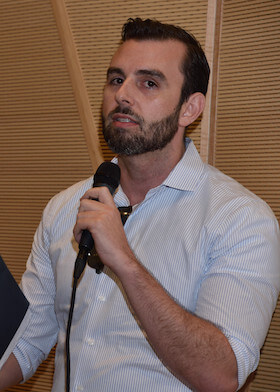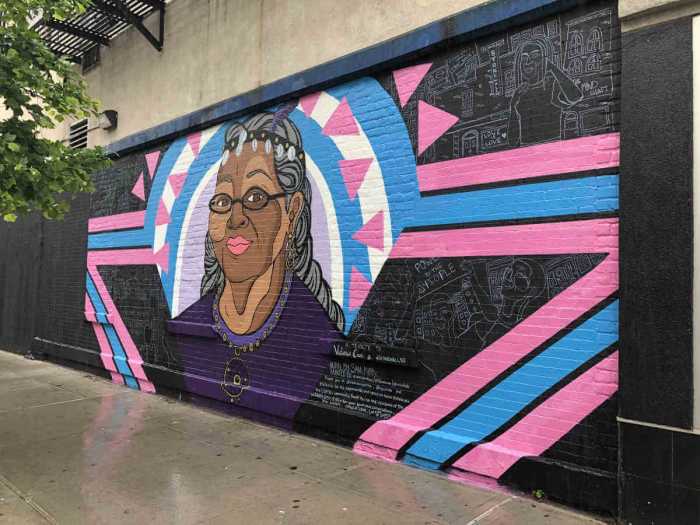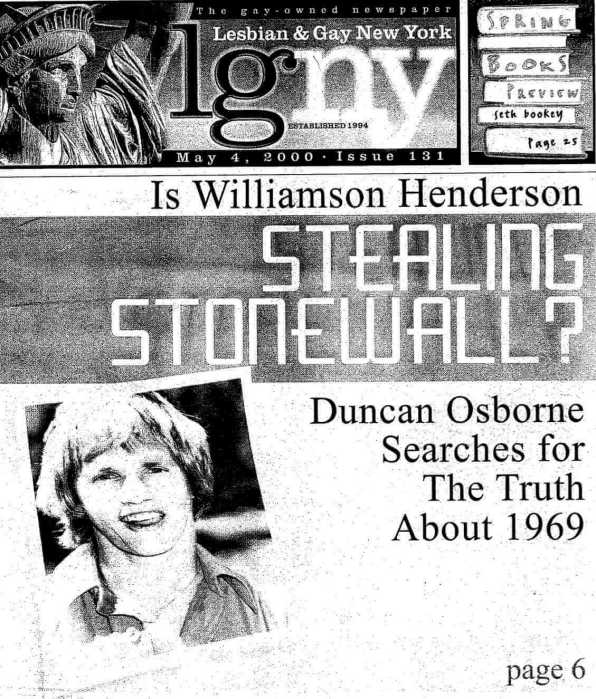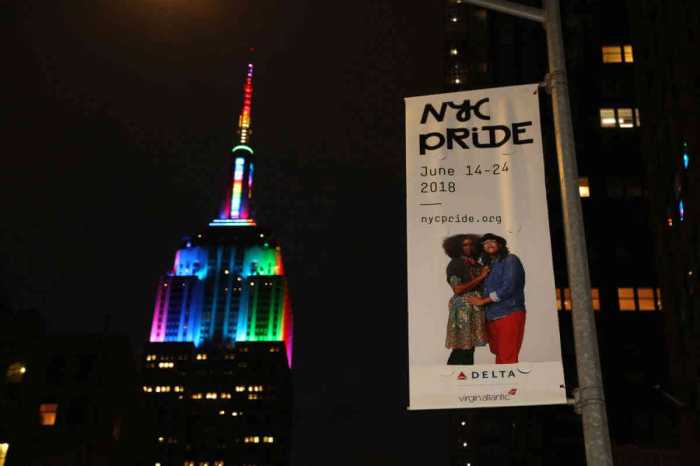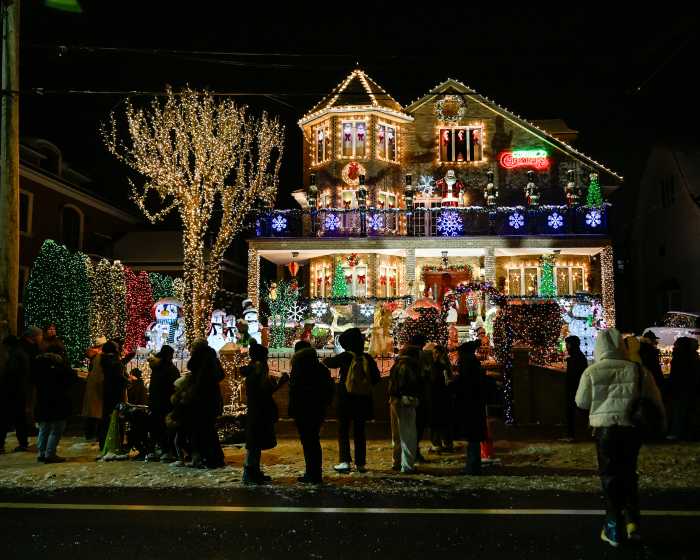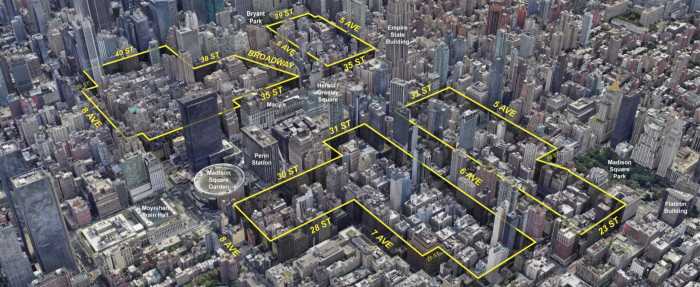Jay W. Walker at a May 4 Reclaim Pride Coalition town hall. | DONNA ACETO
By reaffirming its policy that New York City’s annual Pride Parade is a “free speech platform,” Heritage of Pride (HOP) effectively rebuffed a demand made by the Reclaim Pride Coalition that HOP bar members of the Gay Officers Action League (GOAL) from marching in uniform in the parade and that it keep police vehicles and the police marching band out of the parade.
“We get requests ever year from people who want us to control or restrict who can march,” said James Fallarino, who heads media for HOP during a May 14 meeting held at the Lesbian, Gay, Bisexual & Transgender Community Center.
Fallarino asked HOP members to approve, or re-approve, HOP’s longstanding policy that any group can register to march and that HOP, which produces New York City’s annual Pride Parade and related events, does not tell marchers how to present themselves beyond applying the same rules to all marchers.
LGBT Pride March's organizers reaffirm policy that contingents control their own message
Detective Brian Downey, GOAL’s president, last week said the LGBTQ police group would not agree to demands that they not march in their uniforms, and GOAL praised the May 14 HOP vote. | DONNA ACETO
In April, the Reclaim Pride Coalition presented a series of demands to HOP and the NYPD that are intended to reduce the policing of the parade and the corporate presence in the parade and also to limit GOAL’s participation. Among the demands, the Coalition asked that GOAL members be barred from marching in uniform and carrying weapons in the parade. The group also wanted police vehicles and the police marching band tossed from the event.
Fallarino’s motion reiterated that HOP does not restrict “the types of groups that may register” and that “No restrictions are placed on how marchers may legally express themselves.” The motion was approved in a lopsided 37 to 1 vote.
HOP is a membership organization and individuals become voting members after completing certain volunteer requirements. The organization has a small staff and most of its work is performed by volunteers. The great majority of HOP’s meetings are open to the public.
Roughly 10 members of the Coalition attended the May 14 meeting and prior to the vote, they argued that the restrictions they sought on GOAL were an act of solidarity with those communities, notably communities of color, that feel the brunt of policing in New York City and around the country.
“When you don’t stand up against the crimes the cops commit, you’re being complicit,” said Jay W. Walker, a member of the coalition who is active in Gays Against Guns (GAG), which has not endorsed the demands. GAG formed following the 2016 killings of 49 people in a Florida LGBTQ nightclub.
Jeremiah Johnson, who is active in Rise and Resist, which has endorsed the demands, said GOAL’s presence in the parade was a form of pinkwashing intended to sanitize the more brutal image of police that is commonly presented by the American left.
“I want to point out that for certain communities… for them, they are terrorists,” Johnson said, referring to the police.
ACT UP, the HIV activist group, and Queers Against Israeli Apartheid (QAIA), a group that opposes Israeli policy toward Palestinians, have also endorsed the demands.
Rise and Resist member Jeremiah Johnson at the May 4 Reclaim Pride Coalition meeting. | DONNA ACETO
GOAL praised the vote.
“GOAL is happy to learn that Heritage of Pride has reaffirmed its long-standing commitment to allow marchers full freedom of expression,” the police fraternal organization said in a statement. “We have always marched as activists fighting for equality for LGBTQ people in the criminal justice profession, and for the larger LGBTQ community. Thanks to this decision, GOAL will be marching out and proud to celebrate our community’s history and heritage again this year.”
The Coalition is also seeking a resistance contingent in the march as was present last year. HOP has committed to giving its complete response to the Coalition demands on May 21 and so the May 14 vote was seen as something less than definitive by some Coalition members.
“From my perspective, it was a vote that did not have a lot of substance,” said Jake Tolan, a member of Rise and Resist, an activist group formed following Donald Trump winning the White House in 2016.
HOP has organized a June 5 community forum with the NYPD to discuss the change in the parade’s route. Since 1984, the parade has traveled south along Fifth Avenue to the West Village though the route has been shortened at least twice. This year, it will start in Chelsea and move south on Seventh Avenue then east on Christopher Street and Eighth Street and then north again on Fifth Avenue before ending at 29th Street. The intent is to reduce the size of the parade and the time it takes to complete.
“The NYPD made the final decision based on our proposals and their feedback,” said Julian Sanjivan, HOP’s march director, at the May 14 meeting. “This was not our decision to make.”

